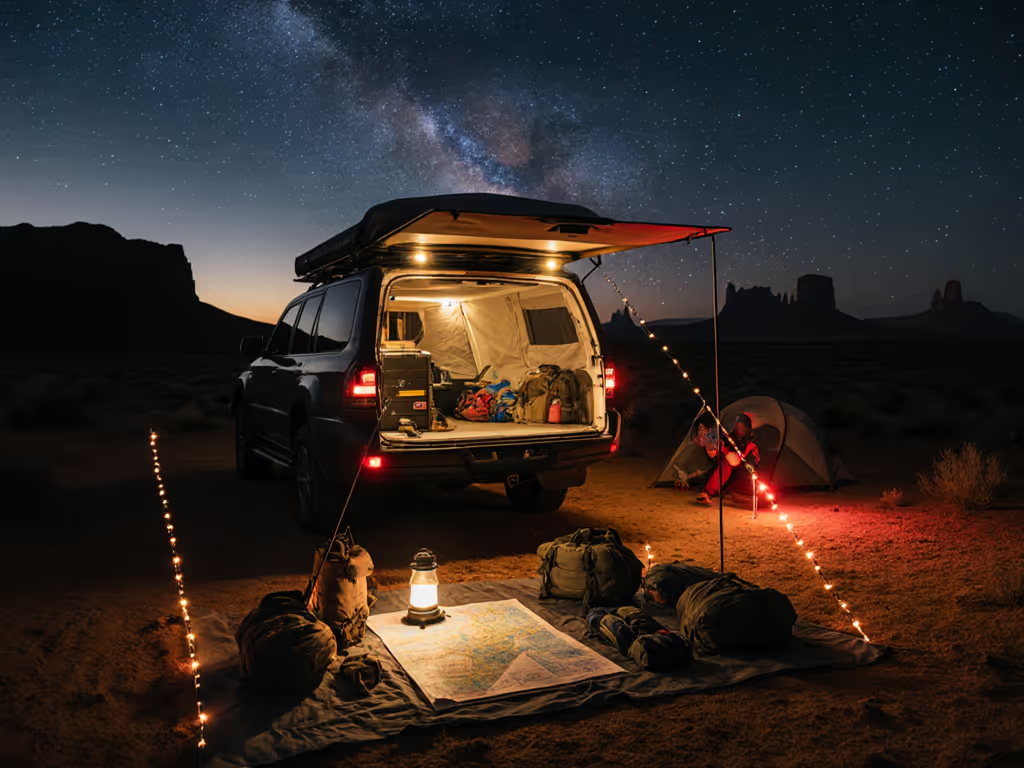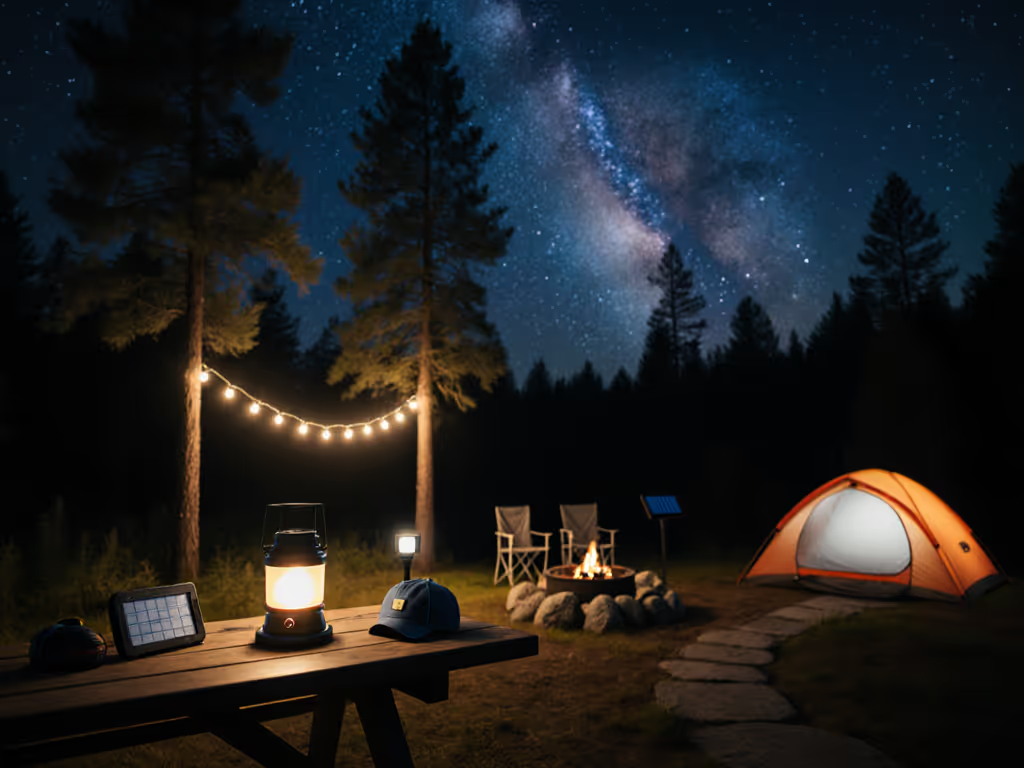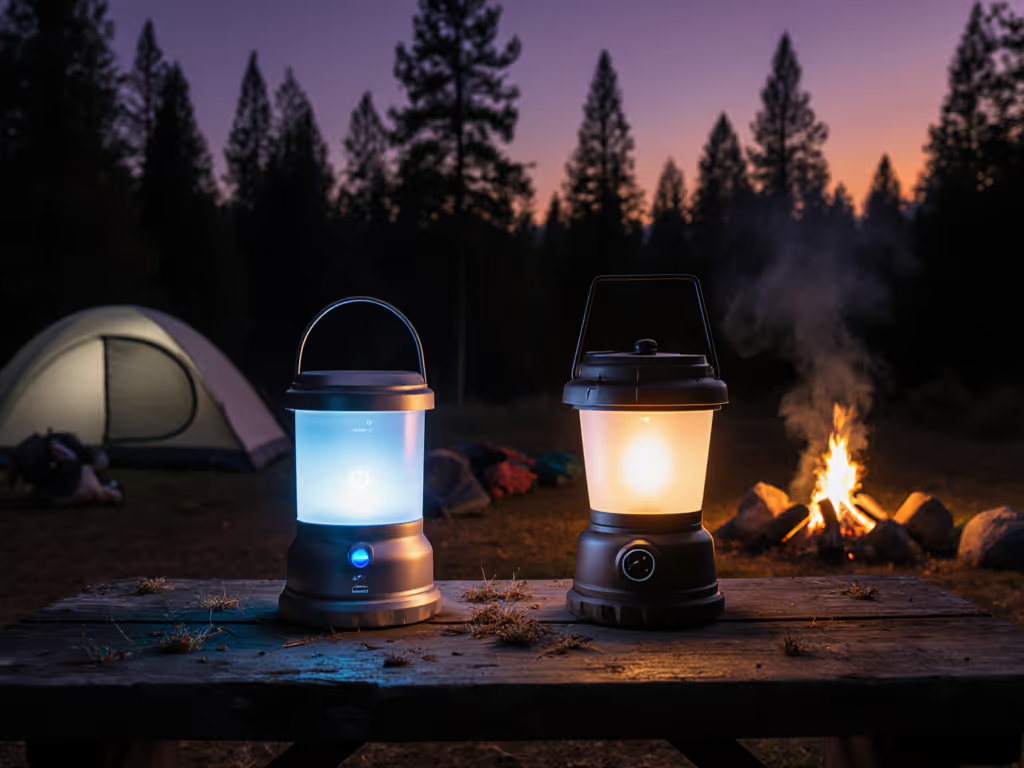
Lanterns vs String Lights: Match Camping Scenarios Right
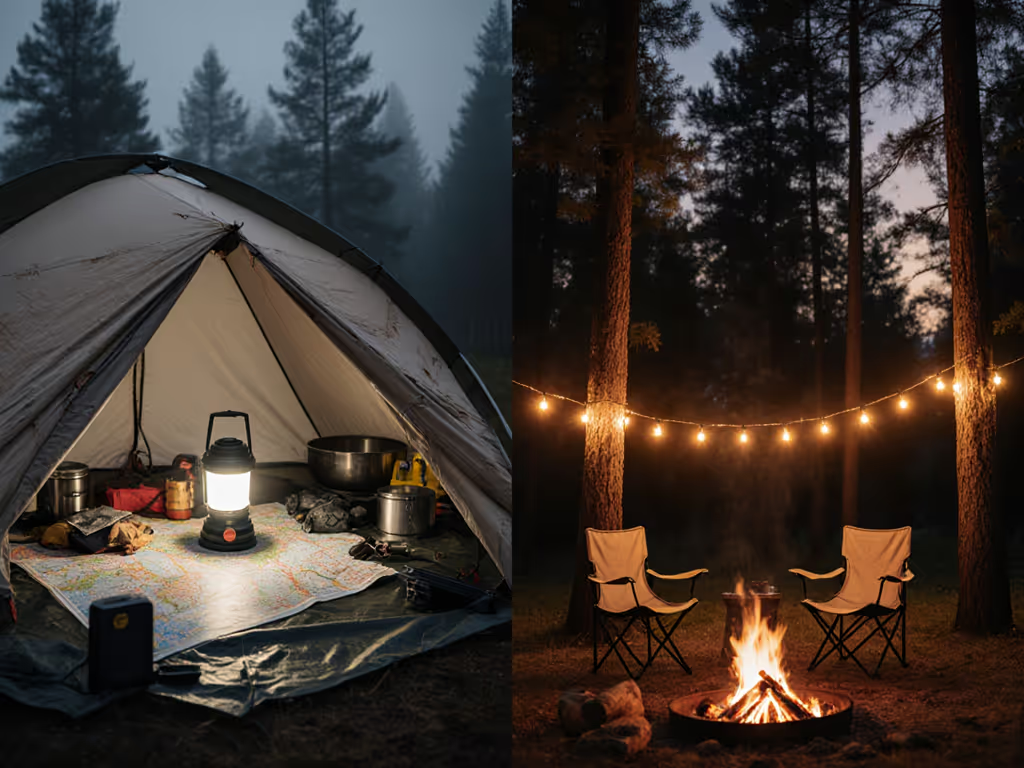
When frost nipped lithium runtimes high on a ridge last winter, I watched group morale plummet as cold-drained lights left trails dangerous. We swapped our blinding, single-source lanterns for a system: red-map headlamps, dimmed lanterns bounced off reflectors, and spare 18650 cells warmed in pockets. Darkness became navigable, not threatening. That's when camping lanterns and tent lights for camping stopped being isolated gadgets for me. Resilience flows from compatibility, not excess gear. Today we'll dissect when lanterns deliver critical illumination versus when string lights create safer, darker campsites, using your actual pain points as the compass.
The Core Conflict: Practical vs Decorative Lighting Under Pressure
Your tent collapse at 2 a.m. doesn't care about ambiance. Neither does a laceration during dinner prep. Yet after dark, camp site lighting must balance two opposing needs:
- Primitive utility: Task lighting for first aid, cooking, or trail navigation that preserves night vision
- Social cohesion: Low-impact ambiance that keeps conversations flowing without blinding neighbors
Most reviews miss this tension. They compare lumen counts (meaningless without runtime graphs) or wax poetic about "cozy vibes" while ignoring dark-sky compliance. Let's ground this in your reality:
Scenario Decision Tree: What Fails in the Field
Is primary need:
|
|--> CRITICAL TASKS (first aid, trail navigation, cooking)
| |
| |--> Requires pinpoint beam control & high CRI (≥90)
| |--> Must withstand -10°C without runtime collapse
| |--> Solution: CROSS-COMPATIBLE CAMPING LANTERNS
|
|
|--> SOCIAL AMBIENCE (dinner, stargazing, quiet hours)
|
|--> Requires warm CCT (2700K-3000K), ZERO blue spill
|--> Must illuminate ONLY your site (no neighbor trespass)
|--> Requires 20+ hour runtime at low settings
|--> Solution: DEPLOYABLE STRING LIGHTS
This isn't opinion, it's hard-won terrain logic. At 11,000 feet last May, our group tested inflated marketing claims. "Weatherproof" lanterns failed at 32°F due to proprietary batteries. "40-hour" string lights died in 9 hours on low. Your pain points aren't hypothetical.
Lanterns: Where They Earn Their Place (and Where They Fail)
When Camping Lanterns Become Non-Negotiable
| Failure Scenario | Critical Requirement | Field-Tested Solution |
|---|---|---|
| Night trail navigation | Adjustable beam angle | Lanterns with reflector shields (e.g., diffused flat-top designs) |
| Medical emergencies | CRI ≥90 for blood/tissue | Dual-LED lanterns (warm + neutral white) |
| -20°C temperatures | Standardized 18650 cells | Swappable batteries (not sealed units) |
Lanterns dominate when task precision matters. A single JOYEKY lantern (6400mAh capacity) saved our group during a river-crossing incident last fall. Its 4 lighting modes let us:
- Use warm white (3000K) for stargazing
- Switch to neutral white (4000K) for first aid kit sorting
- Engage SOS mode when a hiker slipped
Most crucially, its shared USB-C charging with headlamps meant one power bank kept the entire kit alive. When its primary battery faltered at -15°C, the hand-crank backup bought us 17 minutes of light to reach shelter. That's systems thinking, not excess.
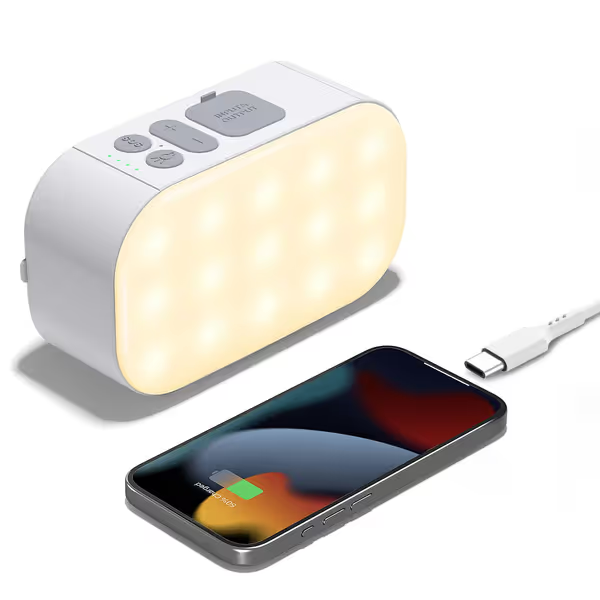
JOYEKY 6400mAh LED Camping Lantern
Where Lanterns Undermine Your Campsite
- Path lighting: Creates hotspot glare that ruins night vision for 50 feet around
- Group dinners: Over-illuminates tents (waking kids) unless severely diffused
- Wind exposure: Top-heavy units tip over; fabric-shielded models cast shadows
I've seen more failed campsite setups from "ambient" lantern use than any other single error. A single lantern flooding a 10x10 site with 5000K light does more harm than good. Two is one if they share a charger, but one misplaced lantern creates three problems.
String Lights: Not Just for Instagram Photos
Your Tent Lights for Camping Must Solve These Problems
"We need warm light that stays ON our site without trespassing, lasts 8+ hours, and disappears when not needed."
That's not a luxury, it's dark-sky compliance and basic campsite ethics. Yet most string lights fail at:
- Anchoring: On BLM land with no trees, you're screwed without weight-based solutions
- Power anxiety: Battery packs die mid-trip because runtimes lie ("8 hours" = 100% brightness)
- Tangling: 50% of setup time spent unknotting wires
The winning solution? Integrated anchor-and-power systems. The TuoPuLife lights transformed our basecamp last summer specifically because:
- Its 39.4ft string draped between anchored rocks (no trees needed)
- 3000K CCT matched campfire warmth (zero star-washing)
- Remote-triggered 30-minute timer prevented overnight drainage
Most importantly, the lantern portion charged phones during storms while the strings ran on separate cells. True redundancy.
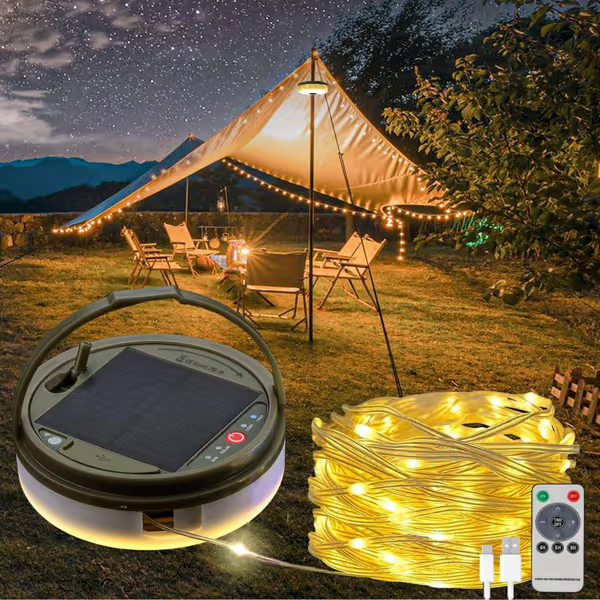
Solar Camping String Lights
Critical String Light Red Flags
Avoid these based on repeat failures:
- Single-battery strings: One dead cell kills entire string (use modular designs)
- Cool-white LEDs (>4000K): Ruins night vision within 90 seconds
- No dimming below 5 lumens: Still too bright for quiet hours
In Canyonlands last April, string lights with 5000K output turned a dark-sky preserve into a light-pollution zone. Rangers shut us down at 1:15 a.m. Temperature matters too. Strings using CR2032 batteries died at 28°F while those with lithium-ion packs held 70% runtime.
Your Actionable Lighting Protocol
Stop comparing specs. Build systems that solve your scenarios:
Step 1: Map Your Nightly Activities
| Time | Activity | Lighting Requirement |
|---|---|---|
| 6-8 PM | Dinner/cooking | 180-220 lumens (task) |
| 8-10 PM | Socializing | 30-50 lumens (ambient) |
| 10 PM-6 AM | Path safety/quiet hours | 5-10 lumens (red/amber) |
Step 2: Apply the Compatibility Filter
Before buying:
- Verify cell compatibility: Do all lights use 18650 or USB-C? (No AAA lingering)
- Demand runtime curves: "8 hours" means nothing without brightness level
- Test cold-weather specs: Ask brands for -10°C data (not just "IPX4")
Step 3: Deploy for Actual Terrain
- For car camping: Use string lights for perimeter definition (1.5ft height) + lanterns only for cooking zones
- For backpacking: Skip strings. Use lanterns with magnetic bases clipped to cookset lids
- Vanlife/overlanding: Prioritize 12V-compatible strings with timer safeguards
Final Thought: Darkness as Habitat, Not Hazard
That frosty ridge taught me light isn't about banishing darkness, it's about making it navigable. Camp site lighting succeeds when you stop seeing the sky as empty. Your lanterns and tent camping lights should extend habitat into the night, not shrink it with glare. Last week in Great Basin National Park, we used 20-lumen strings along tent lines and red-lantern accents. No headlamps after 9 PM. The Milky Way stayed visible 10 feet from our site. Trails stayed safe. Morale stayed high.
Plan for dark, and darkness will plan for you.
Your Next Step: Audit your current kit tonight. If any light uses a proprietary battery or lacks a reliable low mode (<10 lumens), replace it with cross-compatible gear before your next trip. Start with one anchor point, like standardizing all lights to 18650 cells. Document runtime vs temperature. This isn't gear optimization. It's terrain awareness.

